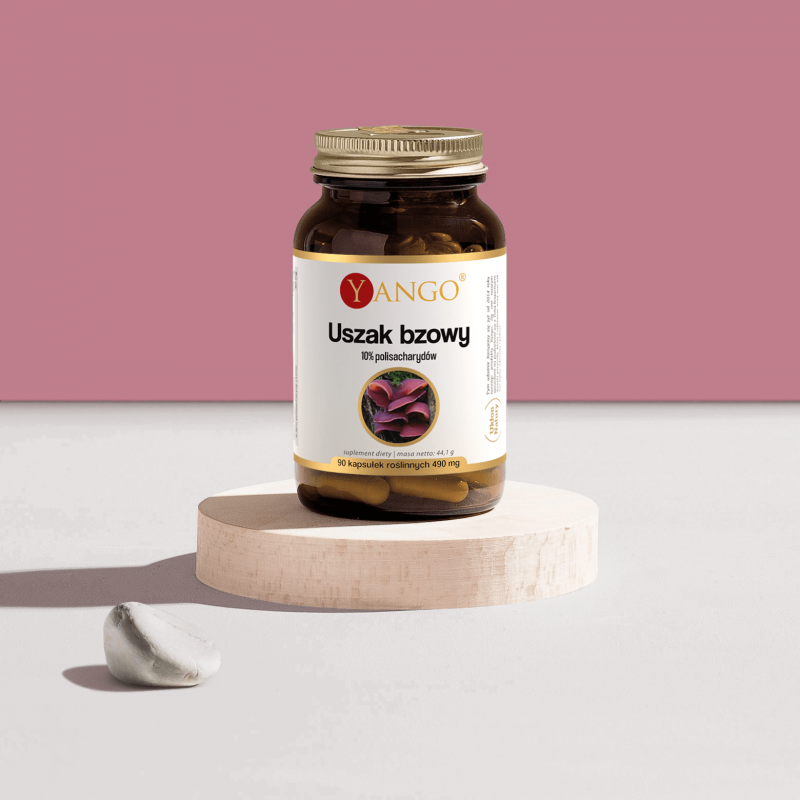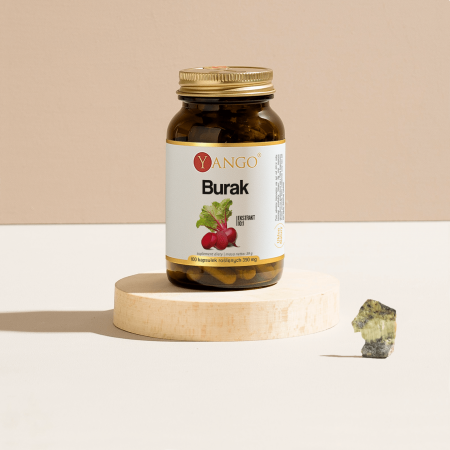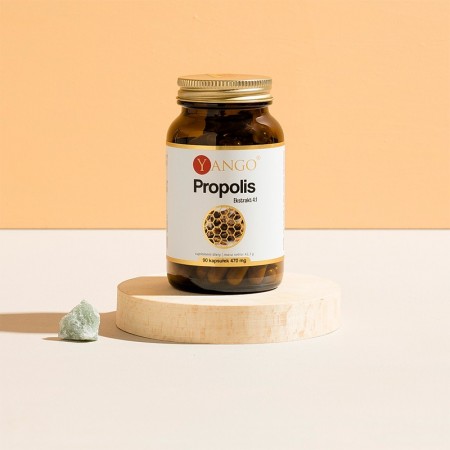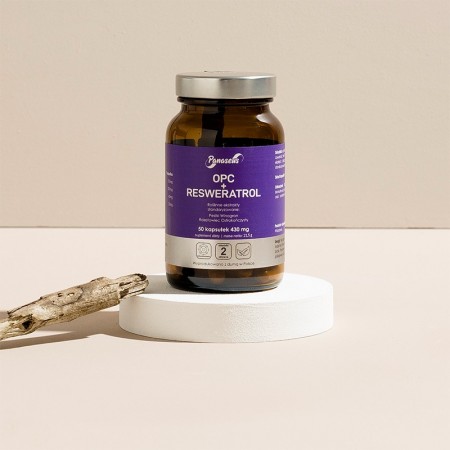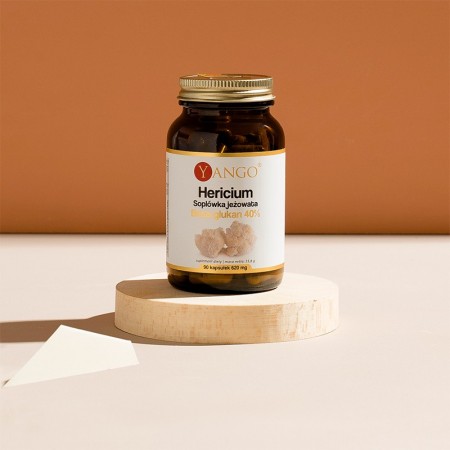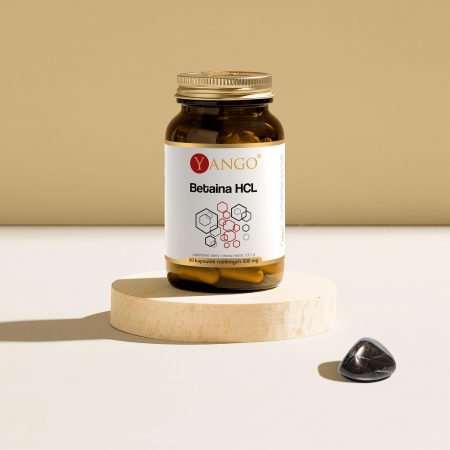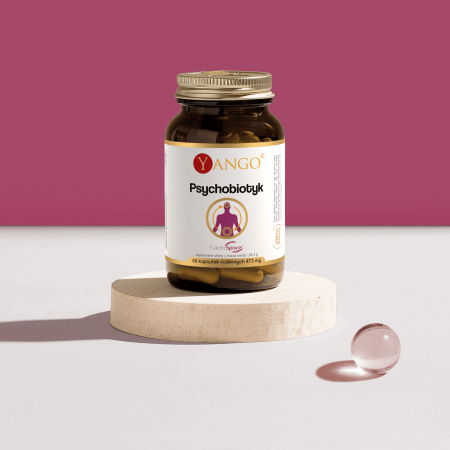Lilac earwig - 90 capsules.
 High-quality lilac ear extract.
High-quality lilac ear extract.
 Support the immune system.
Support the immune system.
 Reduce inflammation.
Reduce inflammation.
 Take care of blood sugar levels.
Take care of blood sugar levels.
-
 Vegan
Vegan
-
 Standaryzowany
Standaryzowany
-
 Polska firma
Polska firma
Elderberry earworm - 10% Polysaccharides
Lilac ear, also known as mun mushroom (Auricularia auricula-judae), is an interesting species of mushroom with wide culinary applications and potential health benefits. The mushroom's name probably comes from its distinctive ear shape, and its delicate texture has made it a popular ingredient in many dishes in Asian and other regions of the world. However, it is not just the taste and texture that attracts attention here, but also the polysaccharides contained in the earworm with potentially valuable properties for the human body, including:
Immunomodulatory properties: polysaccharides from lilac earwig can support and regulate the immune system. Studies suggest that they stimulate the production of lymphocytes, cytokines and other immune cells, which may improve the body's immune response and enhanceimmunity1,2.
- Anti-inflammatory effects: some polysaccharides from elderberry have been shown to reduce the inflammatory response in the body. These compounds can reduce inflammation by regulating the production of inflammatory mediators such as cytokines and nitricoxides3,4,5.
- Blood sugar stabilization: several studies suggest that polysaccharides from elderberry may have a positive effect on blood sugar regulation. In vitro and animal studies have shown that certain polysaccharides can affect glucose metabolism, improve insulin sensitivity and reduce the risk ofdiabetes6,7,8.
Polysaccharides in lilac earwig
Lilac earwort is a mushroom that is not only tasty, but also full of valuable components, such as polysaccharides. Their effects - originally known only to practitioners of traditional herbalism and natural medicine - are now widely described in modern scientific research.
The highest concentration in naturally occurring fruit-bearing lilacs is occupied by beta-glucans. They are known for their positive effects on the immune system. Research suggests that beta-glucans can stimulate the activity of immune cells, improve the function of white blood cells and increase the production of antibodies, which can have antimicrobial and antiviral effects. In addition to this, beta-glucans are also associated with anti-inflammatory effects, which may also boost our immunity in the face ofinfection1,2,3,4,5.
Other studies suggest that beta-glucans may delay glucose absorption from the gastrointestinal tract, which contributes to stabilizing blood sugar levels after a meal. They may also affect tissue insulin sensitivity, which is crucial for adequate glucosemetabolism6,7,8.
Is lilac earwort edible?
Lilac earwort is an edible mushroom with a long history of consumption in Far Eastern cultures. For centuries it has been used in traditional Oriental cuisine, especially in Chinese and Japanese cuisine. Nowadays, it is known all over the world, and although it is not very popular among our native mushroom pickers, it is increasingly common in Polish kitchens.
There are many reasons why lilac earwig is prized as an edible mushroom. First of all, it has a pleasant and quite distinctive taste, which can be described as meaty, nutty or slightly sweet. In addition, after proper thermal preparation, the flesh of this gelatinous mushroom takes on its gristly texture, which makes it an interesting addition to many dishes.
Naturally occurring fruiting bodies of the earwig also have nutritional value. Among other things, they are rich in protein, which is essential for tissue construction and repair, and fiber, which is beneficial for the proper functioning of the digestive system. In addition, elderberries contain B vitamins, which play a key role in the body's energy metabolism. It also contains minerals such as iron, potassium and phosphorus, which are essential for many physiological processes.
Does the lilac earwig occur in Poland? How to recognize it?
Although it is mainly associated with Chinese cuisine, lilac earwig is also found in Poland. It is a fairly common mushroom that can be found in various regions of our country. The lilac earwig prefers moist and shady environments, such as deciduous or mixed forests.
In Poland, the lilac earwig is known by various names, such as lilac ear, common earwig or judas ear. It often grows on tree trunks, especially on dead branches and dead boughs, where it produces characteristic leathery fruiting bodies shaped like an ear or bowl-shaped cup. Young clumps of fruiting bodies are lighter in color, and the size of their caps is about 3 cm. As the mushroom matures, the fruiting body can grow up to 15 cm, taking on an increasingly darker color, from grayish to dark brown. The underside of the fruiting body is also distinctive. It is covered with densely arranged smooth lamellae, running from the stem to the edge of the irregularly undulating cap.
Remember to make sure when you go mushrooming that you are able to correctly identify the earwig. Some related species may be similar, but not all of them are edible. If in doubt, we recommend consulting a more experienced mushroom picker.
Does the lilac earwig grow on lilacs?
The name "lilac earwig" may suggest that the species will be encountered on the trunk of the elderberry or its cousins. The truth, however, is that the lilac earwig is not related to the lilac. Rather, the name of the fungus is related to a historical designation that may be due to the resemblance of the fruiting body of the elderberry earwig to the leathery, dark fruit of the lilac. This nomenclature may be misleading, but the lilac earwig prefers a decidedly different environment. We can meet it mainly on the moist wood of deciduous trees. The lilac mycelium also thrives in mixed forests, so you shouldn't be surprised to see the lilac mycelium on pine or spruce - especially on dead or dying trunks.
WE FOCUS ON QUALITY!
We produce YANGO supplements, maintaining the highest rigors of quality control. We take care of the appropriate concentration of active substances and the complete safety of the products. We believe that in this way we can effectively help you achieve your goals.

